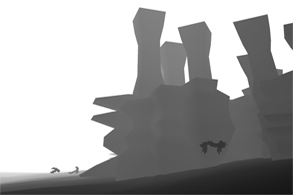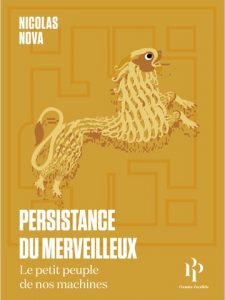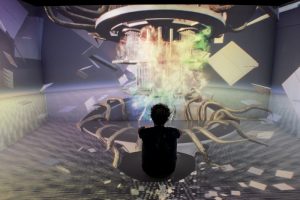I stumbled upon this project a few months ago. Every few weeks or so I would go back to the project page and read it again. Each time I would think ” i should blog it, that’s so fascinating.” Here you go:
Here Be Dragons, by Todd Furmanski uses emergent and genetic algorithms to generate virtual spaces. Through use of digital “genes”, Lindenmeyer (“L”) Systems, cellular automata and other procedural methods, users can navigate and interact with a world containing architecture and creatures that had no direct human designer.

A creature or structure within the virtual space has feedback mechanisms, as well as rules for creation, that combat potential haphazard forms. A city can react to a user much the same way a creature does, as both rely on very similar agent and genetic algorithms. In turn, the creatures and cities may interact with each other, as their protocols are virtually the same.
Very often in designed virtual spaces a user can hit the boundaries too quickly, finding an invisible wall or contrivance that foils further exploration. In Here Be Dragons, creating a new city takes a fraction of a second, as the computer simply has to generate a new space from existing formulas.
At first, the user/explorer will see a foggy terrain, with a city-like entity in the distance, and one or two virtual creatures wandering the landscape. While much of the space has been subject to random and algorithmic variance, one city and a few creatures are specifically placed within eyesight of the explorer, for orientation and direction. They may seek or flee the explorer, and will respond in different, often unexpected ways to the user’s actions.
Both cities and creatures remain fairly rare throughout the space. While the program has the ability to flood the environment with countless objects, a certain cultivation of rarity exists to make encounters more meaningful.







